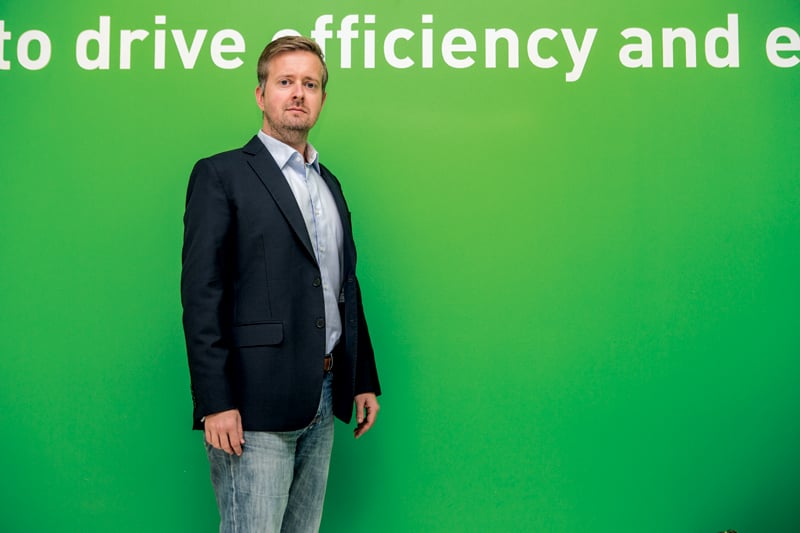Does aligning with one platform limit our data capabilities especially when looking at global deals, asks James Kaye

2015 has highlighted a number of issues and challenges facing digital marketers worldwide. Just looking back over the last four months, we have seen concerns about the proliferation of ad-blockers and their potential impact on media effectiveness and even the notion of a ‘free’ internet. Not to mention significant column inches dedicated to the ongoing issues of ad fraud, viewability and even the ‘death of Flash’.
However, there has been one issue which was largely kept under the radar but has the potential to drive a major shift within the industry. The rise of the so-called ‘walled garden’ era of ad tech.
Over the last two years there has been a shift in the way digital media is bought and sold. The rise of advertising technology (or ad tech) designed to help connect buyers with a wide range of inventory has been meteoric and driven largely by the rise of programmatic media buys. For many it provided an ideal alternative – the option to reduce reliance on an increasingly small number of partners and as a result the ad tech ecosystem flourished with a huge number of platforms (both competitive and complimentary) all looking for a piece of the action.
As with any new sector hardly a day has gone by without news of another merger or partnership amongst major ad tech firms both globally and in the Middle East and North Africa as these companies look to capitalise on growth opportunities and protect their revenue streams. This raft of mergers has given rise to the ‘stack’ or ‘tech stack’ as companies buy up specialists in analytics, tag management, fraud detection and even demand site platforms to be able to offer a one-stop shop for advertisers.
And it’s not over yet. As Terence Kawaja, founder and chief executive officer of Luma Partners, stated in his yearly digital summit, ‘there will be blood’ as ad tech companies continue to consolidate or fold into 2016.
In any developing sector, this consolidation is to be expected. At the turn of the 20th century there were almost 500 car companies in the United States, 30 years later this fell to 44 with 80 per cent of production coming from the top three (GM, Ford & Chrysler). It is simply a natural process, symptomatic of a market capitalising on growth whilst protecting its revenue streams.
However, with media spends and therefore power consolidating across an increasingly smaller number of providers (according to eMarketer, Google and Facebook account for 40 per cent of global digital spends), we increasingly see these companies use their monopolistic position in media to lever buyers into using their tech stack.
When we look at these major players, Facebook Ad Platform has locked everything up into its newly acquired Atlas Platform and Google recently announced its decision to pull all YouTube inventory from the open exchange, even AOL and Yahoo! hold back data to push you to buy through their platforms. As a result, we see the digital ecosystem that was opened up though AdTech start moving back to a more silo-ed proposition.
To be clear, consolidation is not necessarily a bad thing. With consolidation comes better fit and integration, data foundations are generally stronger with greater insight into audience and platform usage. In addition, cross-platform attribution and device measurement can also be simpler, especially with login data. Indeed, looking at the challenges marketers face delivering the right message to the right person at the right time across an increasingly fragmented ecosystem, the grass does indeed look greener inside the walled garden.
However, we can’t simply sleepwalk into a relationship based on the ‘easy option’, without understanding the full implications for our businesses. The first question raised is one of transparency and accountability. Against increasing pressure to show tangible efficiency and performance across digital ad spends, these walled gardens are increasingly forcing buyers to use attribution and measurement technologies which are integrated into their marketing stacks, rather than agnostic. At times of increasing focus on viewability, ad fraud and performance, this can only increase scepticism across all parties.
Alignment of benchmarks and key performance indicators also becomes a challenge, as the technology and methodologies used between stacks to measure performance may vary. And in some cases, these platforms are actively pushing back against third party verification. Look no further than to ongoing discussions between GroupM and Facebook regarding ad viewability as an example of this.
A final question and probably the most important is one of data. With the convergence of ad tech and marketing tech (CRM, analytics, CMS) to drive relevance and performance, data is becoming an increasingly valuable currency for all parties. Whilst aligning with a closed system may generate initial benefits in data collection and usage, who owns the data? How is it being used? What happens if we leave the platform? Does aligning with one platform limit our data capabilities especially when looking at global deals?
What is absolutely certain it that this process of consolidation is not yet finished and for the time being at least these walled gardens are here to stay. However, before simply jumping into these platforms, we as marketers have a responsibility to look past the short term carrot to ensure it’s in our long term best interest.
James Kaye is digital planning director at MEC Interaction










